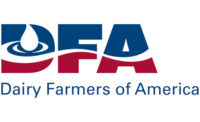The Food Safety Modernization Act gives the U.S. Food and Drug Administration increased powers to view records (except financial records) kept by dairy processors. Processors will be required to turn over records, including HACCP records, to FDA inspectors who are investigating whether foods have been adulterated or misbranded.
Allen Sayler, vp of food safety, technology & regulatory solutions at Randolph Associates Inc.,
Processors will need formal, written HACCP programs and will be required to update them every three years, although Sayler recommends an annual revision.
To the four hazards-biological, physical, chemical and terrorism-FSMA has added radiological agents, which fall under the chemical section. “We all need to brush up on our physics,” Sayler said.
Dairy processors need to have a “robust” supplier verification program that includes supply chain management, he said.
While plants will have to register with the FDA (at no cost) in even-numbered years, there will be inspections every three years for foods considered high risk and every five years for low-risk foods. While the FDA has not yet identified the risks for each food, Sayler supposes that dairy powders will be considered low risk and all other dairy foods high risk.
Sayler said he is not bothered by the FDA’s new authority to issue mandatory recalls, because state agencies already have that power. He did express concern about FDA’s power to order the detention of any article of food for up to 30 days if the officer or qualified employee has reason to believe that the article of food is adulterated or misbranded. That long of a time would effectively push foods beyond their expiration date.
As for transporting of foods, dairy processors need to be able to identify the “immediate previous source” (that is, where the ingredient came from) and the “immediate subsequent recipient” (where the product is going to). Processors might have to create records beyond invoices and bills of lading.





